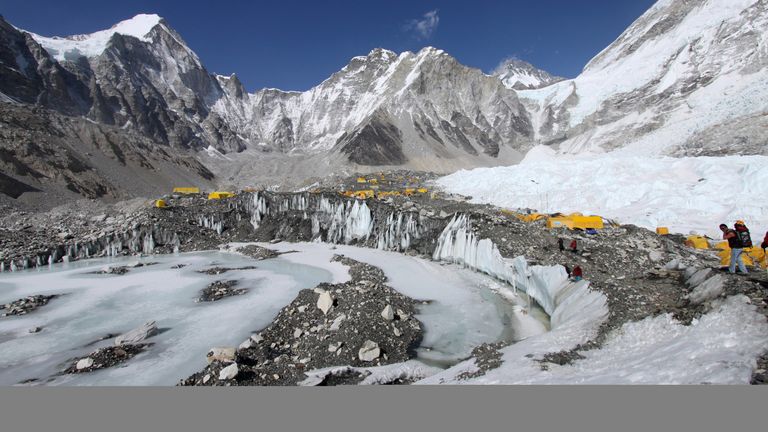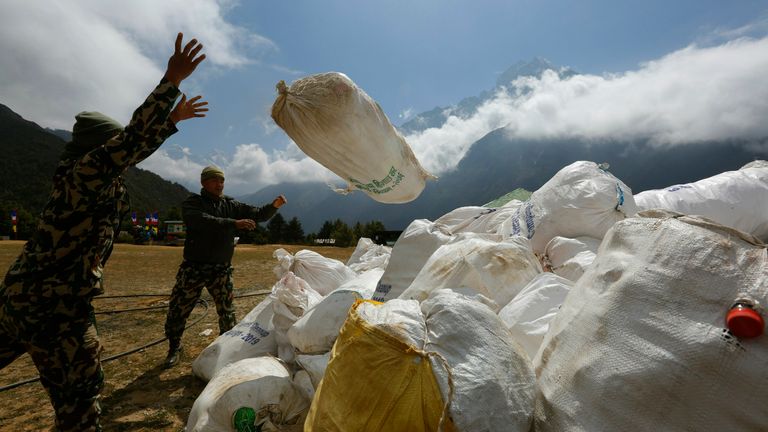[ad_1]
Nepal is planning to move its Everest base camp almost 400m lower, as human activity and climate change are making the area unsafe.
The mountain, which sits on the border of Nepal and China, is home to two camps on opposite sides of its base.
The south base camp, the more popular of the two on the Nepalese side, is situated on the rapidly thinning Khumbu glacier.
In 2021, the Nepalese government reportedly issued 408 Everest permits to climbers, but the camp itself is used by thousands of people who trek to the bottom of the mountain.
Tara Nath Adhikari, director of Nepal’s Department of Tourism, told Sky News human activity and carbon emissions were accelerating the melting of the ice.
The base camp is currently located 5,400m above the mountain’s snowline, but plans could see it shifted as much as 400m lower, to a site where there is no year-round ice.
“We have to protect the ice and snow on the mountain,” he said.
The government department has begun speaking to environmentalists, mountaineers and local people to find a safe site for the camp to move to.
Mr Adhikari said he did not think a lower camp would put off potential climbers – or make the mountain harder to summit.
“It will not make it harder to climb but it will make it safer because we have to focus on sustainability,” he said.
“If you can climb the mountain, but the next generation cannot, that is not good.
“We have to preserve the mountain.”
Tshering Tenzing Sherpa, the Everest base camp manager, told Sky News it was unlikely the camp would move for a few years.
“The glaciers are moving fast due to climate change,” he said. But he said the camp was safe, adding: “I don’t think we need a change for a few years.”
Mr Adhikari also said the move would not happen imminently.
It comes as ice on the South Col Glacier (SCG) was revealed to have shrunk 80 times faster than it formed, according to a new report published by the international scientific journal Nature found earlier this year.
In 2018, a study by Leeds University found ice temperatures inside Khumbu, the world’s highest glacier, were warmer than expected and especially vulnerable to future climate change.
Human waste and debris left on the mountain have also long been a concern, with climbers leaving behind empty oxygen cylinders, food packaging, and used rope.
[ad_2]




